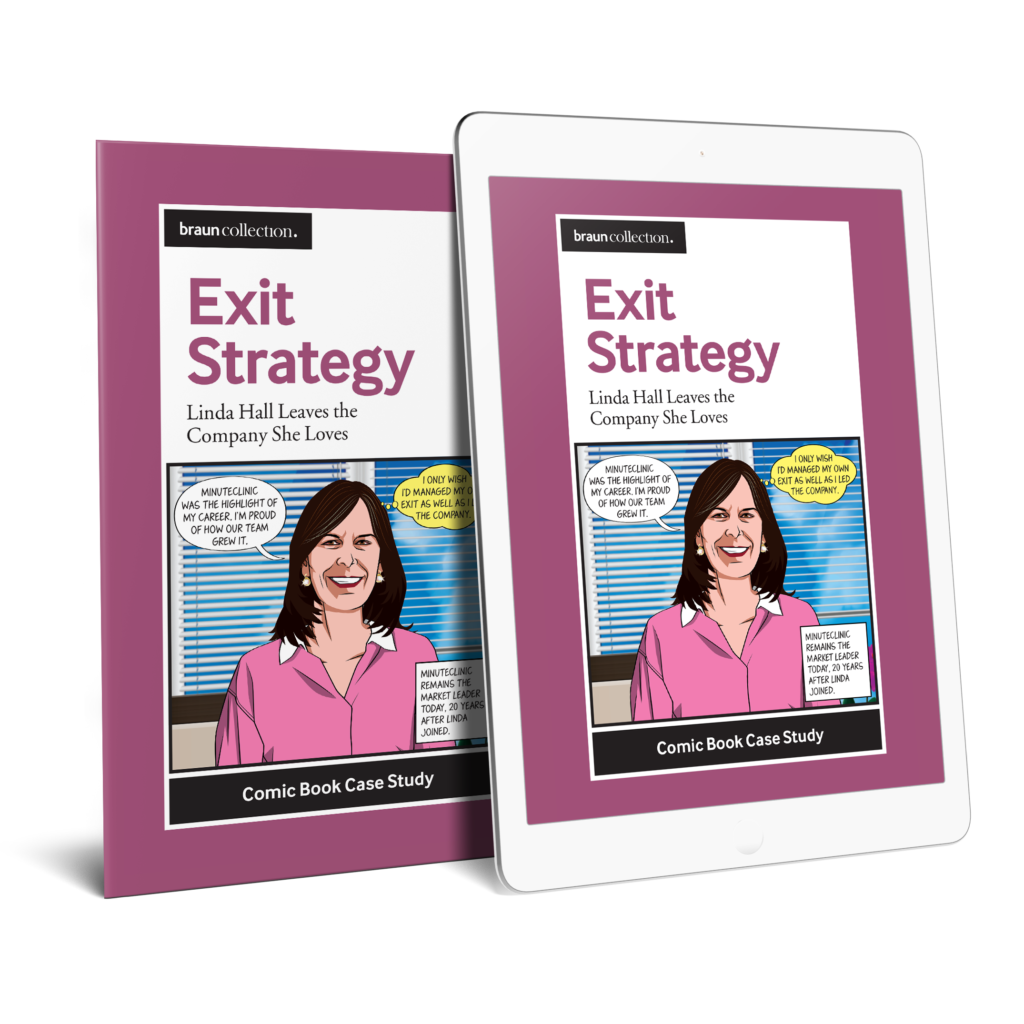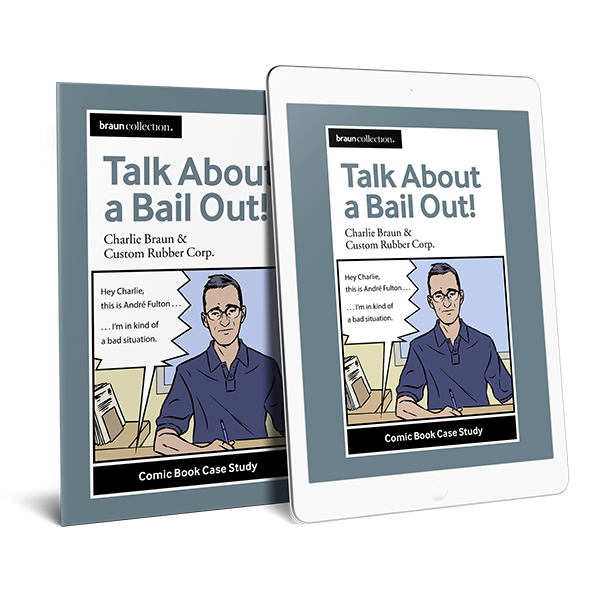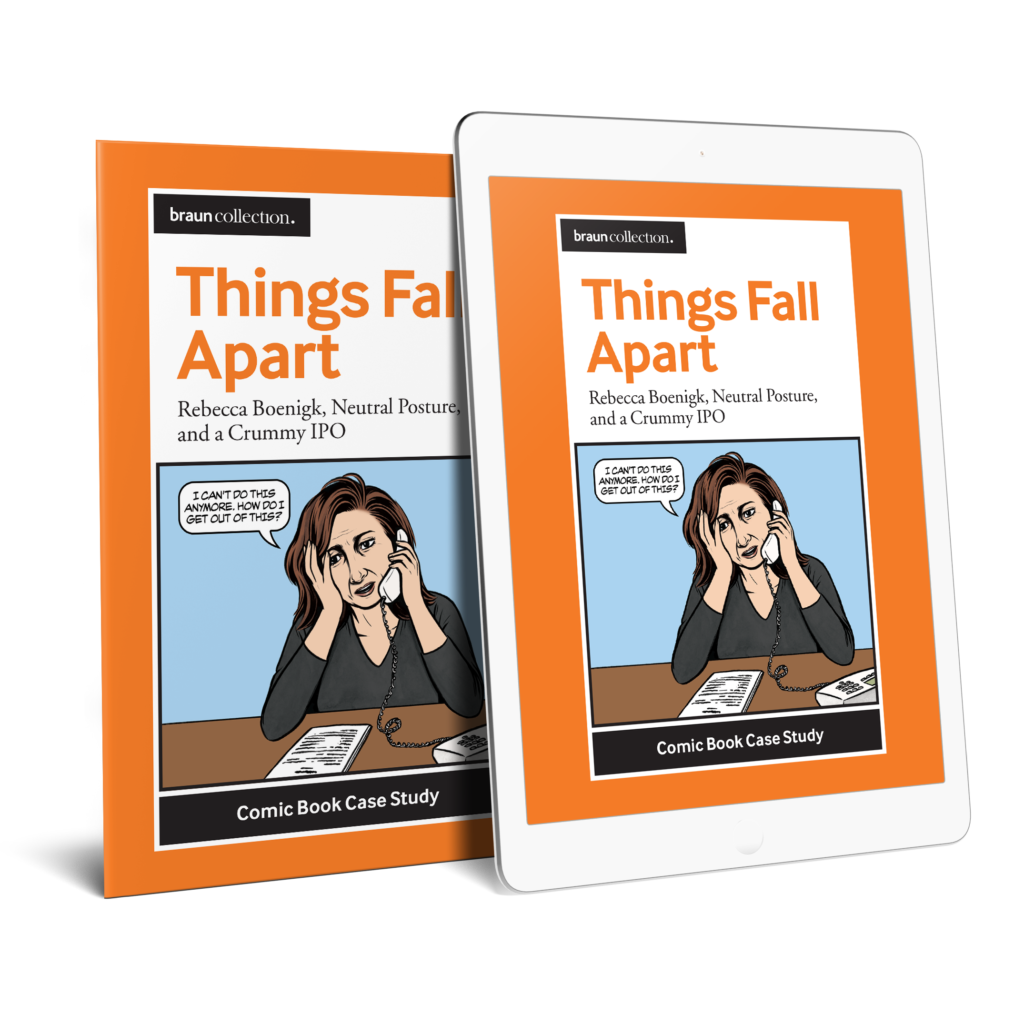Comic Books
Short, Engaging Case Studies
Talk About a Bail-Out
"Talk about a Bail-Out," which covers the HR challenges of running an industrial manufacturing company, is a great tool to teach our enterpreneurship students.
Professor of Entrepreneurship, Benedictine College
Talk About a Bail-Out
The story the comic book, "Talk about a Bail-Out," tells leads to empathy and creative purpose. I'm glad you've made it scalable so we can all learn from it. Thank you!
Educator, Catholic Entrepreneurship & Design Experience
Talk About a Bail-Out
The dilemmas shared in this comic book are real. They help facilitate important discussions about very relevant issues during these troubled times.
Accounting Professor, Case Teaching & Writing Tutor
Exit Strategy
Entrepreneur Linda Hall and her MinuteClinic team raise capital, grow and position the company, and develop the patient strategy that it’s known for today. Hall is proud of the team, the acquisition by CVS, and all MinuteClinic became, but she wishes she had done several things differently to manage her relationships with the board and her power and position at the company.
Grit & Growth
Grit & Growth tells the story of Paul Schumacher, founder and owner of America’s largest on-your-lot custom homebuilder, Schumacher Homes, especially how the company got through the financial crisis in 2008-2010.
Talk About a Bail-Out!
Talk about a Bail-Out! tells the story of Charlie Braun, owner of a small manufacturing business in Cleveland, Ohio, and his dilemma on whether to pay a desperate employee’s bail during a global pandemic.
Things Fall Apart
Rebecca Boenigk takes her company public but finds that operating as a small, public company is very inefficient. Should she work to fix the public problems or do an expensive, time-consuming, complex go-private transaction?
Learn More



